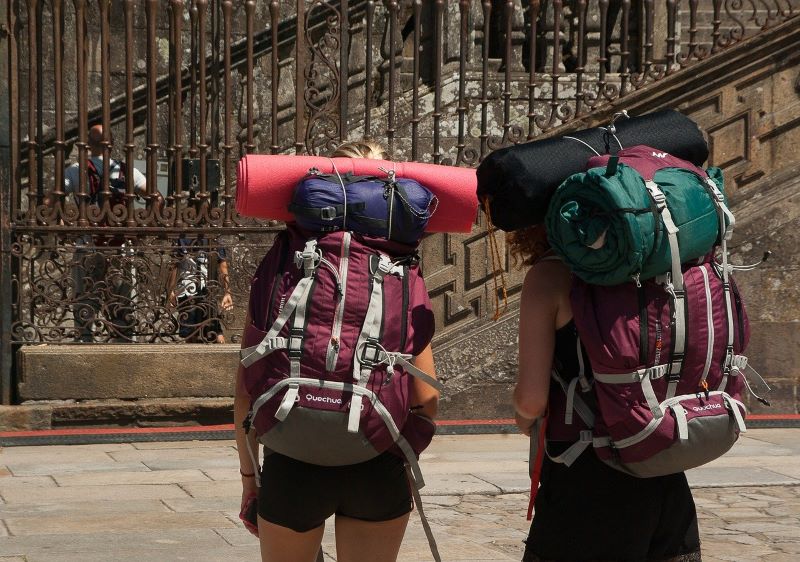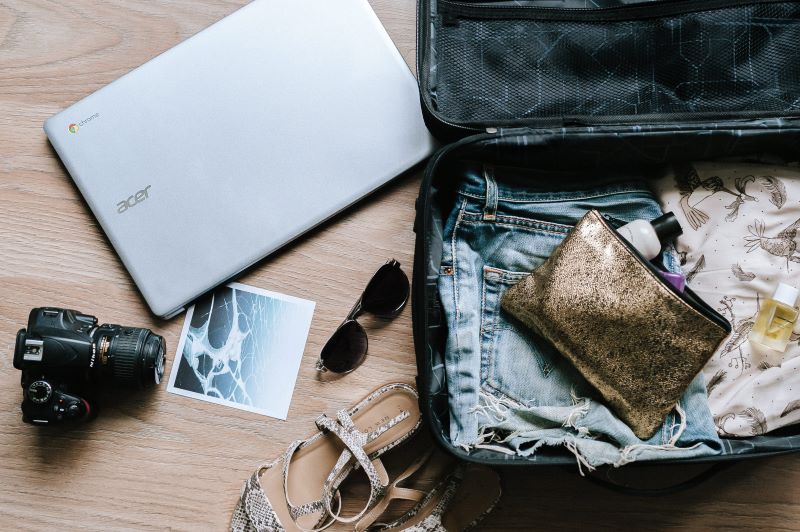How to load your backpack is a subject that seems without mystery, yet few travellers know how to fill their bags...
Loading your backpack on a daily basis is essential for long-distance travellers. A good load allows you to get organised quickly, to carry your belongings better and to protect them well and, of course, to carry it better without a backache
I come across many travellers walking around with backpacks that are unbalanced, too bulky, with poorly adjusted straps. And when they make, undo and redo their bags in the middle of the dormitory… it’s scary! They take a long time to find what they are looking for and when they find it, it is often crushed, damaged. Those who have chosen to make a big trip know it well, during this travel we see a great number of backpacks of all colours, all sizes and all countries. Many of them have chosen the backpack rather than the suitcase because a backpack makes you feel like a backpacker, an adventurer. In my opinion, they should have chosen a suitcase with wheels…
On a long journey where hiking is not a daily routine, the backpack is more like a suitcase: but you don’t fill a packpack like a suitcase!
A trekker’s backpack is loaded according to the effort of the person carrying it, the relief he will encounter, the type of ground and what he puts on top or at the bottom of the bag depends on whether he will sleep in a bivouac or in a hut (so whether he has a tent to pitch or not).
A trekking backpack contains the essentials for a few days, the traveller can allow himself a bit of extras, some material to use occasionally and a few elegant clothes.
Extreme trekkers recommend not attaching anything to the backpack. This is a wise advice during a sporty trek, there is no question of triggering an earthquake with every step! But when travelling, you can allow yourself a little more fantasy if it’s just a matter of getting to your hostel or the train station.
Loading a backpack for a long trip is not the same thing as loading a backpack for a trek, even for several days
The bag loading rules that mountain professionals or those exploring the planet’s wilderness give on the internet are all great and true, even if the backpack of the long-distance traveller is used a little differently.
However, it is always a question of gaining weight and volume and of favouring the practical side by imperatively respecting these 3 rules:
- The weight must be well distributed
- The contents should be well compacted and not move once in motion
- What’s important must be at hand
To load your bag properly, you have to ask yourself some practical questions
There you go, you’re ready with your bag. All the stuff you want to take with you is spread out on the ground and all looks like a contry after a tsunami.
Before trying to fit everything in the bag, ask yourself:
- What do I need quickly? The first aid kit, toilet paper, a towel?
- What do I take out of the bag first when I arrive at my hotel, my dormitory?
- What items are fragile, strong, crushable?
On the “first floor” of the backpack you must put what you use first and what you use last. When I arrive in a dormitory, the first things I take out of the bag are in order: the first aid kit, the toilet bag, my towels and my pyjamas. Because it is in this reverse order that these 3 items arrive in the bag when I leave. Usually when I leave a place, I take a shower in the morning (you never know what the new place will be like), so I use my towel, the contents of my toilet bag, my toothbrush. Out of respect for my neighbours in the dorm, I pack my bag the night before, especially if I leave early. My day’s clothes are ready at the foot of my bed, pyjamas, toilet bag and towel are the last item to go in the backpack.
What about the first aid kit? The last thing you will put in the backpack before you close it is the first aid kit. In case of an emergency, for you or for others, you must find it quickly! Searching the whole bag for plasters with a bloody finger is really not optimal. Moreover, you risk losing precious time to deal with the emergency. It is on the top of the bag because in case of emergency it is quick to use!
Depending on each person, the organisation is a little different because the backpack is loaded according to what you will use first when you arrive at your destination. There is no strict rule, it just has to be logical with your habits.
Storing your backpack properly means having everything within easy reach without emptying it
Having to take everything out to find a pair of socks or a charger, after a few weeks, that’s what will quickly annoy you. That’s one of the reasons why it’s important to always put everything in the same place so you can easily find what you need.
When you’re in transit or on a hike, remember to be able to quickly grab the important things in having to put the bag down. If the weather changes fast, where is my fleece, my scarf, my anorak? Slide them under the plastic cover to catch them in a single gesture without putting down or opening the backpack.
A well-loaded bag is a bag that stands up by itself!
The things must be well packed so that they don’t move when you are on the move. If the bag stays upright it also means that the weight is well distributed, it doesn’t lean left or right and that’s good for your back, knees and legs.
A few tips to keep things tidy inside the bag
- I often see travellers who pack everything in plastic bags which they then compact into the backpack. I think this is unnecessary and time consuming. Only pack in plastic bags what really shouldn’t get wet (computer or electrical equipment). On the practical side, a maximum of two or three plastic bags will be enough to put wet clothes, dirty laundry, garbage, but no more.
- In general, briefs and socks should be changed every day. Fold the socks together with the briefs/pants and you will have everything you need at hand.
- If you don’t want to find your dress or shirt completely crumpled, roll it! In this tubular form, it will wrinkle much less!
- It’s best to store your medicines in a protective, airtight box, otherwise they risk being crushed and therefore unusable when the time comes.
- Forget shower gel and opt for the lighter, more durable and eco-friendly bar of soap. Don’t forget to find a travel soap box!

